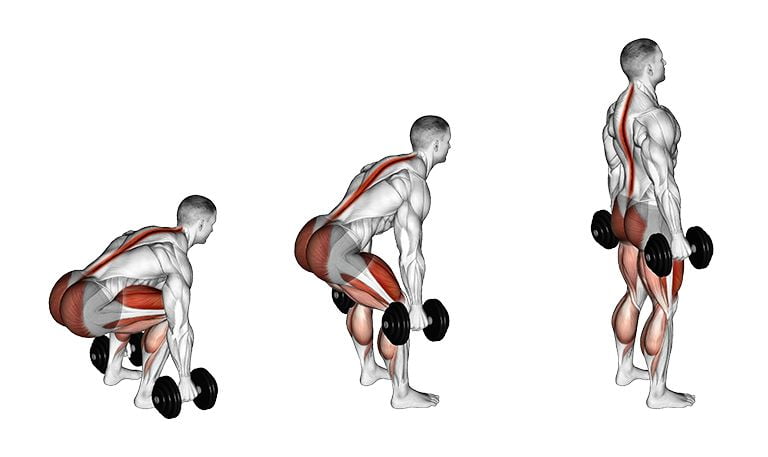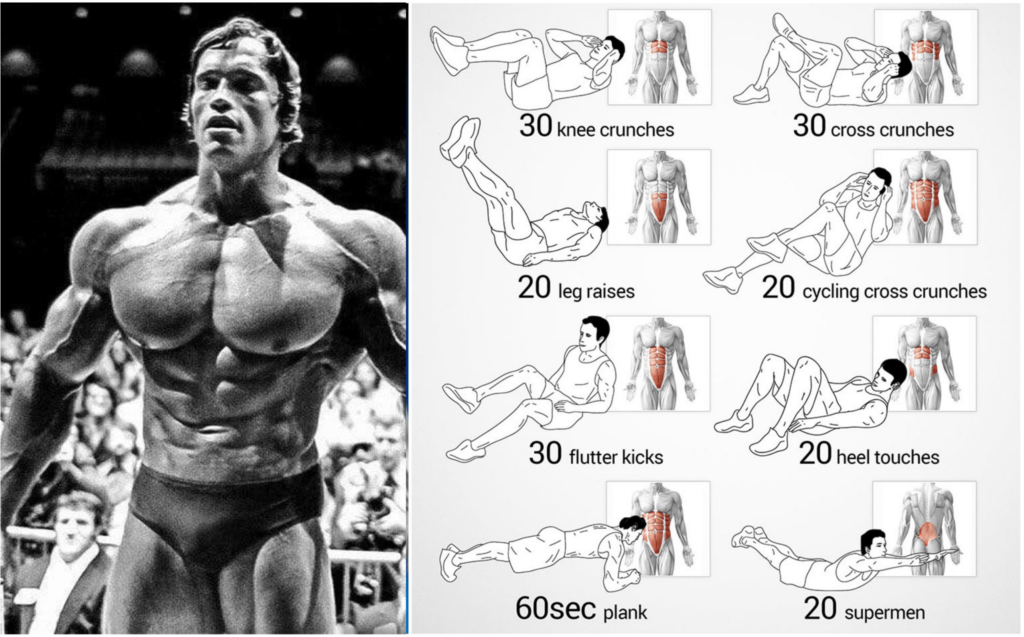Introduction
Welcome to our comprehensive guide on strength training for women at home. In today’s fast-paced world, finding time for the gym can be a challenge, but that shouldn’t stop you from achieving your fitness goals. Whether you’re new to strength training or looking to take your workouts to the next level, this article is here to provide you with easy-to-follow tips and guidance. Discover the numerous benefits of strength training, learn how to set up your home gym, and find answers to common questions about women’s strength training.
Let’s dive into the world of home-based strength training and unlock your full potential in the comfort of your own space.
The Benefits of Strength Training for Women
Strength training is not only about building muscles; it offers a myriad of benefits that positively impact your overall well-being. Here are some key advantages of incorporating strength training exercises into your routine:
- Muscle Mass and Metabolism: Strength training helps increase lean muscle mass. Muscle burns more calories at rest compared to fat. Therefore, as women build more muscle through strength training, their metabolism gets a boost, making it easier to maintain or lose weight.
- Bone Health: Women are more prone to osteoporosis, a condition characterized by weakened bones. Strength training places stress on bones, which stimulates them to become denser and stronger, reducing the risk of fractures and osteoporosis.
- Body Composition: Strength training helps shape and tone the body. It can help women achieve a lean and sculpted physique by reducing body fat and increasing muscle definition.
- Functional Strength: Everyday activities become more accessible with increased strength. Lifting groceries, carrying children, or even maintaining good posture can all benefit from improved muscular strength.
- Hormonal Balance: Strength training can help regulate hormones, particularly for women going through menopause. It can alleviate symptoms like hot flashes and mood swings.
- Injury Prevention: Strengthening muscles around joints can help prevent injuries, especially in areas like the knees and lower back. This is crucial for maintaining an active lifestyle.
- Mental Health: Exercise, including strength training, has been shown to reduce stress and improve mood by releasing endorphins. It can also boost self-confidence and body image.
- Longevity: Regular strength training has been associated with a longer, healthier life. It reduces the risk of chronic diseases like heart disease and diabetes.
SHOP FOR THE BEST ADJUSTABLE DUMBBELL SET ON AMAZON
Strength training for women is essential not only for physical health but also for mental well-being. It contributes to a strong, functional body, reduces the risk of various health conditions, and enhances overall quality of life.
How to Incorporate Strength Training Into Workout Routine
Incorporating strength training into your workout routine can be highly beneficial for building muscle, increasing metabolism, and improving overall fitness. Whether you’re a beginner or have some experience with strength training, here’s a step-by-step guide on how to add it to your workout routine:
1. Set Clear Goals
Determine what you want to achieve with strength training. Are you looking to build muscle, increase strength, or improve your overall fitness? Setting clear goals will help you tailor your routine.
2. Choose the Right Frequency
Decide how many days per week you can dedicate to strength training. Beginners can start with 2-3 days a week, while more experienced individuals may train 4-5 days a week.
3. Create a Balanced Routine
Incorporate exercises that target different muscle groups. A well-rounded routine should include exercises for the upper body, lower body, and core. Common exercises include squats, deadlifts, bench presses, rows, lunges, and planks.
4. Start with Compound Exercises
If you’re new to strength training, begin with compound exercises that work multiple muscle groups simultaneously. These exercises are efficient and effective. Examples of compound exercises include squats, deadlifts, and push-ups.
5. Add Isolation Exercises (Optional)
Once you’re comfortable with compound exercises, you can add isolation exercises that target specific muscle groups. Examples include bicep curls, tricep extensions, and calf raises.
6. Determine Sets and Repetitions
The number of sets and repetitions you perform will depend on your goals:
- For muscle building (hypertrophy): 3-5 sets of 8-12 repetitions.
- For strength: 3-5 sets of 4-6 repetitions.
- For endurance: 2-3 sets of 12-20+ repetitions.
7. Progressive Overload
To see continued progress, gradually increase the weight or resistance as your strength improves. This concept is known as progressive overload.
8. Warm-Up and Cool Down
Always warm up with some light cardio or dynamic stretches before your strength training session to prevent injury. After your workout, perform static stretches to help with flexibility and reduce muscle soreness.
9. Rest Days
Allow your muscles to recover by scheduling rest days between strength training sessions. On these days, focus on other forms of exercise like cardio, yoga, or active recovery.
Remember that a well-rounded fitness routine includes a mix of strength training, cardiovascular exercise, flexibility work, and proper nutrition. Tailor your workout routine to your individual goals and preferences, and most importantly, enjoy the journey to a stronger and healthier you.
Essential Strength Training Exercises for Women at Home
Now let’s explore some key strength training exercises that you can perform in the comfort of your own home. Incorporate these movements into your routine to target different muscle groups and achieve a balanced workout:
SHOP FOR THE BEST QUALITY RESISTANCE BAND ON AMAZON
Squats: This compound exercise targets the lower body, including the quadriceps, hamstrings, and glutes. Start with bodyweight squats and gradually progress to weighted squats as you build strength.

Lunges: Lunges are excellent for working the muscles of the lower body, particularly the quadriceps, hamstrings, and glutes. Perform walking lunges or stationary lunges to challenge your leg muscles.
Push-Ups: Push-ups engage the chest, shoulders, triceps, and core muscles. Begin with modified push-ups, where you support your knees on the ground, and gradually progress to full push-ups as your strength improves.
Planks: Planks are a fantastic exercise for strengthening the core muscles, including the abs, obliques, and lower back. Start with a basic plank position and gradually increase the duration as you build endurance.
Dumbbell Rows: This exercise targets the upper back muscles, including the rhomboids and latissimus dorsi. Use dumbbells or other weighted objects to perform rows while maintaining proper form and engaging the back muscles.

Shoulder Press: The shoulder press targets the deltoids and upper body muscles. You can use dumbbells or resistance bands to perform this exercise, either seated or standing.
Deadlifts: Deadlifts are a compound exercise that primarily targets the posterior chain, including the glutes, hamstrings, and lower back. Start with lighter weights and focus on maintaining proper form throughout the movement.

Glute Bridges: Glute bridges activate the gluteal muscles and help improve hip stability. Lie on your back, bend your knees, and lift your hips off the ground, squeezing your glutes at the top of the movement.

Remember to start with weights that challenge you but allow you to maintain proper form. Gradually increase the weight or repetitions as you progress. It’s also essential to warm up before your strength training session and cool down afterward to prevent injury and aid recovery.
Creating a Supportive Environment for Strength Training at Home
To ensure a successful strength training journey at home, it’s important to create a supportive environment. Consider the following tips:
SHOP FOR THE BEST QUALITY STABILITY BALL ON AMAZON
- Designate a Workout Space: Dedicate a specific area in your home for your workouts. Clear the space of any potential hazards and ensure you have enough room to move freely.
- Gather Necessary Equipment: Depending on your goals and preferences, gather the required equipment such as dumbbells, resistance bands, stability balls, or a yoga mat. Having the right tools will enhance your training experience.
- Establish a Routine: Set a consistent schedule for your strength training sessions. By treating them as important appointments, you are more likely to stay committed and avoid procrastination.
- Find an Accountability Partner: Partner up with a friend or family member who shares similar fitness goals. Having someone to hold you accountable and provide support can significantly increase your motivation and adherence.
- Seek Professional Guidance: If you’re unsure about proper form or need personalized guidance, consider consulting a certified personal trainer. They can provide expert advice and tailor a program specifically to your needs and goals.
Common Mistakes to Avoid in Women’s Strength Training
Strength training is a fantastic way for women to improve their overall health, build muscle, and boost confidence. However, there are some common mistakes that women often make when embarking on their strength training journey.
1. Neglecting Proper Warm-Up
- Mistake: Many women skip or rush through warm-up exercises, which can increase the risk of injury.
- Solution: Spend at least 5-10 minutes warming up with light cardio and dynamic stretches to prepare your muscles and joints for the workout.
2. Using Incorrect Form
- Mistake: Poor form can lead to injuries and hinder progress.
- Solution: Take the time to learn the proper form for each exercise. Consider working with a trainer or using instructional videos.
3. Overdoing Cardio
- Mistake: Some women focus too much on cardio and neglect strength training.
- Solution: Aim for a balanced workout routine that includes both cardiovascular exercise and strength training. Both are essential for overall health.
4. Fear of Lifting Heavy Weights
- Mistake: Many women fear that lifting heavy weights will make them bulky.
- Solution: Lifting heavy weights actually helps build lean muscle and increase metabolism. Don’t be afraid to challenge yourself with heavier loads.
5. Not Progressing in Workouts
- Mistake: Sticking to the same routine for too long can lead to a plateau.
- Solution: Gradually increase the weight, intensity, or complexity of your exercises to continue progressing.
6. Ignoring Rest and Recovery
- Mistake: Overtraining and not allowing for proper recovery can lead to burnout and injuries.
- Solution: Ensure you get adequate rest between workouts, prioritize sleep, and incorporate rest days into your routine.
7. Relying on Isolation Exercises Only
- Mistake: Focusing solely on isolation exercises may lead to imbalances.
- Solution: Incorporate compound exercises like squats, deadlifts, and bench presses to work multiple muscle groups simultaneously.
8. Skipping Nutrition
- Mistake: Neglecting proper nutrition can hinder muscle growth and recovery.
- Solution: Fuel your body with a balanced diet that includes sufficient protein, healthy fats, and carbohydrates to support your workouts.
SHOP FOR THE YOGA MAT ON AMAZON
Avoiding these common mistakes in women’s strength training is crucial for a safe and effective fitness journey. By prioritizing proper form, balanced workouts, progressive overload, and self-care, women can achieve their strength and fitness goals while minimizing the risk of injury and burnout.
Nutrition Tips to Support Women’s Strength Training
While strength training is crucial for building muscle and strength, proper nutrition plays a vital role in maximizing your results. Consider these nutrition tips to support your strength training journey:
1. Balance Your Macronutrients
- Protein: Protein is essential for muscle repair and growth. Aim to include a source of lean protein in each meal, such as chicken, turkey, tofu, beans, or Greek yogurt.
- Carbohydrates: Carbs provide energy for your workouts. Opt for complex carbohydrates like whole grains, fruits, and vegetables to sustain energy levels.
- Fats: Healthy fats are crucial for hormone production and joint health. Incorporate sources like avocados, nuts, seeds, and olive oil into your diet.
2. Prioritize Post-Workout Nutrition
After your strength training session, consume a balanced meal or snack within an hour to aid recovery. A combination of protein and carbohydrates helps repair muscles and replenish glycogen stores.
3. Stay Hydrated
Proper hydration is often overlooked but is essential for muscle function and overall health. Drink water throughout the day, and consider incorporating electrolyte-rich beverages during intense workouts.
4. Monitor Your Calories
To build muscle and strength, you need to consume enough calories to support your training. Calculate your daily caloric needs and ensure you’re eating at maintenance or a slight surplus.
5. Don’t Fear Carbs
Carbohydrates are not your enemy; they are your energy source. When you strength train, your body uses carbohydrates for fuel. Incorporate complex carbs like sweet potatoes, quinoa, and oats into your diet.
6. Include Adequate Fiber
Fiber aids digestion and can help regulate blood sugar levels. High-fiber foods like vegetables, fruits, and whole grains should be part of your daily intake.
7. Watch Your Portions
Portion control is crucial to avoid overeating, which can lead to weight gain. Use smaller plates and be mindful of portion sizes.
8. Prioritize Quality Supplements
While it’s best to get your nutrients from whole foods, some supplements can help fill nutritional gaps. Consider options like whey protein, creatine, and omega-3 fatty acids, but consult with a healthcare professional before adding supplements to your routine.
9. Plan Your Meals
Meal planning and preparation can help you stay on track with your nutrition goals. Prepare healthy meals and snacks in advance to avoid reaching for less nutritious options when you’re hungry.
Remember that every individual is unique, and what works for one person may not work for another. Finding a nutrition plan that aligns with your preferences, lifestyle, and goals is important. By combining a balanced diet with effective strength training, you can optimize your fitness journey and achieve your desired results.
FAQs
Q1. Will strength training make me bulky?
Ans. No, strength training will not automatically make you bulky. Women generally have lower levels of testosterone, a hormone responsible for muscle growth. Instead, strength training will help you build lean muscles and achieve a toned physique.
Q2. How often should I strength train?
Ans. Aim for at least two to three strength training sessions per week, allowing a day of rest between each session. This frequency allows your muscles to recover and adapt to the training stimulus.
Q3. Can I do strength training during pregnancy?
Ans. If you have a healthy pregnancy and clearance from your healthcare provider, you can continue strength training with modifications. Consult with your doctor to determine the best approach for your specific situation.
Q4. Is strength training suitable for older women?
Ans. Absolutely! Strength training is beneficial for women of all ages. It helps combat age-related muscle loss, improves bone density, and enhances overall functional strength and mobility.
Q5. Can strength training help with weight loss?
Ans. Yes, strength training can aid in weight loss by increasing your metabolic rate and helping you build lean muscle mass. Combined with a balanced diet, it can contribute to overall weight management.
Q6. How long does it take to see results from strength training?
Ans. The time it takes to see results varies depending on various factors such as frequency, intensity, nutrition, and individual differences. With consistency and dedication, you can expect to see improvements in strength and muscle tone within a few weeks to a couple of months.
Q7. Can I do strength training with a pre-existing injury?
Ans. If you have a pre-existing injury, it’s essential to consult with a healthcare professional or physical therapist before starting a strength training program. They can provide guidance on exercises to avoid or modify to accommodate your injury.
Conclusion
Congratulations on completing this comprehensive guide on strength training for women at home! By incorporating the recommended exercises and following a progressive program, you are on your way to unlocking your full potential and achieving your fitness goals.
Remember, consistency, dedication, and proper form are key to reaping the benefits of strength training. Get ready to embrace the journey of empowerment and enjoy the incredible results that await you. Here’s to your strength, health, and well-being!

Good day, and welcome to Fitthour. My name is Shubham Vijay, and I am a certified personal trainer and nutrition coach with 6 years of experience in the fitness industry. At Fitthour, we specialize in types of training, such as strength training, cardio, or HIIT, and our mission is to help clients achieve their fitness goals and improve their overall health.




